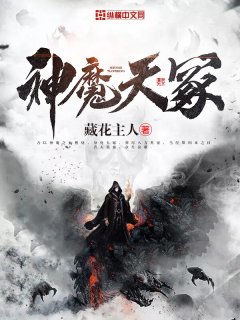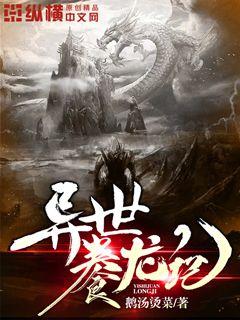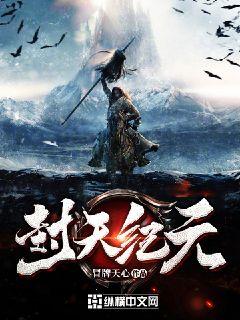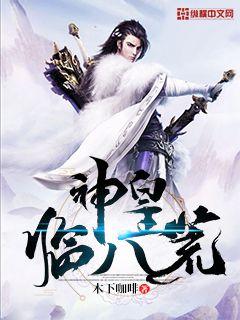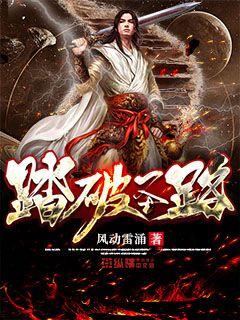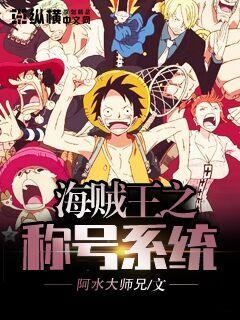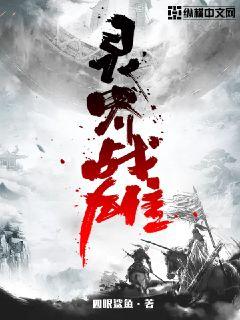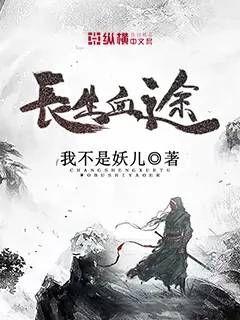jrs直播 低调直播nba|jrs直播足球比赛
- 来源:jrs直播网
- 2024-11-22 06:43:17

### 文章摘要
在本文中,我们将深入探讨勇士马队球员的出色表现,从战绩、技艺以及团队精神三个方面分析其如何共同铸就辉煌。勇士马队不仅在比赛中取得了令人瞩目的成绩,还展现出高超的球技和无与伦比的团队协作精神,这些因素共同促成了球队的卓越表现与成就。
---
1、战绩的光辉
勇士马队以其令人惊叹的比赛战绩,成为众人瞩目的焦点。他们在各项赛事中屡创佳绩,胜率居高不下,稳坐榜首。这种卓越的战绩不仅令球队名扬四海,也深深激励了球员们在赛场上的每一次表现。
此外,勇士马队在关键时刻的决策能力和执行力更是无可挑剔,他们展现出了超凡的比赛策略和战术应对能力。这些因素共同构成了他们无与伦比的比赛表现的基础。
而每位球员在场上的个人表现,都为球队的整体战绩贡献了独特的力量,使得团队的集体实力得以充分展示和发挥。
2、技艺的精湛
勇士马队的球员们不仅在战术层面表现出色,他们的个人技艺更是堪称一流。无论是进攻端的精准射门还是防守端的铜墙铁壁,每位球员都展现出了与众不同的技术天赋。
球队中的核心球员尤其在技艺方面表现突出,他们不仅仅依靠身体力量和速度,更是通过精准的控球、过人和传球技巧,为球队创造了无数得分机会和防守反击的可能。
而技艺的提升也离不开球员们日复一日的刻苦训练和不懈努力,他们在技术层面的进步不仅提升了个人的竞技水平,也深化了球队整体的战斗力。
3、团队精神的凝聚
在勇士马队,团队精神是每位球员心中的核心价值。无论是场上还是场下,球员们始终保持着高度的团结和协作精神,这不仅体现在比赛中默契的配合和无私的传球,更体现在日常训练和生活中的互帮互助。
团队精神的凝聚力量,使得勇士马队能够在关键时刻团结一心、共克难关,他们始终相信只有团结一致才能战胜一切对手。
而这种团队精神的培养和传承,则离不开教练组的精心引导和球员们的共同努力,他们共同铸就了一支不可战胜的整体力量。
4、辉煌的共同铸就
综上所述,勇士马队的卓越表现不仅源于优异的战绩、精湛的技艺,更因为强大的团队精神而得以持续提升和发展。这三者相辅相成、相互促进,共同铸就了球队的辉煌。
无论是在赛场上还是场下,勇士马队的每一位球员都在不断追求卓越,努力将团队推向新的高度。他们以实际行动诠释着团结与力量的真谛,成为体育界的典范和榜样。
勇士马队所展现出的战绩、技艺和团队精神,不仅影响着球迷们的心灵,更为整个体育界树立了一个可供追随的标杆。
总结:
勇士马队凭借卓越的战绩、精湛的技艺和强大的团队精神,共同铸就了一支不可战胜的球队。他们展示了团结与努力的力量,成为体育界的典范。
在竞技场上,勇士马队不仅仅是一支球队,更是一种信念和精神的象征。
文章摘要的内容:
本文探讨了火箭球员登(假设为James Harden)在其职业生涯中的巅峰与挑战。首先分析了他的职业生涯高峰期,包括技术风格和领导能力的发展。其次讨论了他面临的挑战,如比赛中的压力和团队变动带来的影响。进一步探究了他在职业生涯中的成长历程和对球队的贡献,最后总结了他如何应对挑战并继续追求卓越。
1、职业生涯的高峰期
James Harden 的技术风格如何在职业生涯中发展?他的进攻战术如何影响了球队的比赛策略?Harden 在哪些赛季表现最为突出?
他的领导能力如何在球队中得到体现?Harden 是如何在场上发挥出色并激励队友的?他的职业生涯高峰期具体表现在哪些比赛和赛季?
这一阶段的成功如何影响了他的个人品牌和球员形象?Harden 如何利用这些经验和成就来推动自己的职业生涯?
2、挑战与压力
在职业生涯中,Harden 面临过哪些挑战?比如比赛中的关键时刻如何应对?他在面对防守强度增加时是如何调整自己的技战术?
团队中的变动对他的影响是怎样的?换队和队友的变动如何影响了他的表现和心态?
作为球队核心,Harden 如何处理外界对他的期望和批评?他是如何管理个人情绪以及在赛季中保持稳定的表现?
3、成长与贡献
Harden 在职业生涯中如何成长和演变?他的技术和战术理解在不同阶段有何不同?
他在球队中的角色如何逐步发展?从早期的替补到核心球员的转变是如何发生的?
Harden 对球队的贡献主要体现在哪些方面?除了得分能力,他在防守、传球和团队合作方面的贡献如何?
4、挑战的应对与追求卓越
面对职业生涯中的挑战,Harden 采取了哪些策略来应对?他是如何调整自己的技能和比赛风格以应对不同的竞争压力?
他在追求卓越方面有何独特之处?与其他顶级球员相比,Harden 的个人追求和职业态度如何帮助他在挑战中取得成功?
总结:
James Harden 的职业生涯展示了一位顶尖球员如何在竞技场上巅峰与挑战并存。通过技术的进步和领导力的发挥,他在球场上取得了显著的成就。然而,他也面临着诸多挑战,如比赛压力和团队变动,但他通过自身的成长和对团队的贡献,成功地应对了这些挑战,并继续追求卓越。
在未来,Harden 将继续以他的独特方式影响篮球界,并为球迷们带来更多精彩的比赛。
文章摘要的内容:
马内尔是足球界的一颗璀璨明星,他的足球生涯经历了从非洲乡村到成为世界级巨星的壮举。本文将深入探讨马内尔的成长历程、足球生涯、人格魅力以及对非洲足球的影响,展现他如何从平凡的起点蜕变成为一名备受尊敬的足球传奇。
1、成长历程
马内尔的成长背景
青年时期的足球梦想
从非洲乡村到国际足坛的跨越
2、足球生涯
马内尔的职业足球生涯起步
在顶级俱乐部的辉煌表现
国家队生涯的亮点
3、人格魅力
马内尔的谦逊与努力
对团队的贡献与领导力
慈善事业与社会责任感
4、对非洲足球的影响
成为非洲足球的象征
激励新一代非洲球员
对非洲足球发展的启示
总结:
马内尔的故事不仅是一段足球传奇,更是对人生奋斗的诠释。他的成长历程、足球生涯、人格魅力以及对非洲足球的影响都展现出了他的非凡价值。马内尔不仅在球场上创造了辉煌,更在人生道路上成为了无数人的榜样与启迪。
文章摘要的内容:
NBA背伤球员面临着巨大的疼痛与挑战,但他们展现了无与伦比的坚韧与毅力。本文将从生理挑战、心理抗争、康复之路和职业生涯影响四个方面深入探讨这些球员的故事,揭示他们在逆境中的成长与坚守。
1、生理挑战
背伤球员常常面临着复杂的生理问题。首先,背部损伤如椎间盘突出可能导致神经压迫,引发剧烈的疼痛。
他们的康复过程常常漫长而艰难,需要经历手术、物理疗法等多种治疗手段。
尽管如此,球员们通过专业的康复计划和医疗团队的支持,逐步重返球场。
2、心理抗争
背伤不仅是身体上的挑战,也是心理上的考验。球员们面对长期的休战和疼痛,常常感到沮丧和挫败。
然而,他们通过心理咨询、团队支持和自我调节,战胜心理障碍,保持积极的态度。
一些球员还通过宗教信仰或心灵寄托找到内心的平静和力量。
3、康复之路
康复是背伤球员的必由之路。他们通过系统的康复训练、饮食调整和生活习惯改变,逐步恢复身体功能。
康复过程中的每一个进步都是一次艰苦的努力,背后有无数个不为人知的日日夜夜。
他们需要在康复和训练之间找到平衡,以避免再次受伤。
4、职业生涯影响
背伤对球员的职业生涯有深远影响。一些球员由于伤情严重,不得不提前退役或转型其他职业。
然而,也有球员通过顽强的意志和适应能力,重新找回状态,延续自己的职业生涯。
无论最终的职业生涯如何,背伤经历都深刻地影响了他们的态度和价值观。
总结:
NBA背伤球员面对疼痛与挑战,展现了惊人的坚韧和毅力。通过战胜生理挑战、克服心理抗争、走过漫长的康复之路和应对职业生涯的影响,他们不仅在体育赛场上取得了成功,更在人生道路上树立了典范。
文章摘要的内容
日本球员转会市场近年来呈现出多样化和国际化的新趋势。本文将从技术革新、战术需求、国际化引进和市场竞争四个方面深入探讨这些变化,分析日本球员在全球足坛中的角色与影响。
1、技术革新与训练方法
随着科技的进步,日本足球开始注重数据分析和个性化训练,这不仅提高了球员的技术水平,还改变了球员的身体素质和战术适应能力。
新型训练设备的应用,如虚拟现实训练和生物力学分析,帮助日本球员在全球舞台上更具竞争力。
技术革新不仅提升了球员个人能力,还促进了整体战术风格的演变,使日本球员在转会市场上更加受到欢迎。
2、战术需求与角色多样化
国际足坛对灵活多变的战术体系越来越依赖于日本球员的技术优势和战术理解力。
从技术型中场到侧翼球员,日本球员的角色在球队中的多样化使用,使其在转会市场上更具吸引力。
战术需求的变化不仅展示了日本足球战术理念的全球影响力,还推动了球员转会市场的新发展。
3、国际化引进与市场竞争
欧洲俱乐部越来越倾向于引进技术精湛、战术灵活的日本球员,以应对国内外联赛的竞争压力。
日本球员在英超、德甲等顶级联赛中的表现,为其赢得了更多的国际曝光和市场认可。
国际化引进加剧了球员市场的竞争,也促进了日本球员在全球范围内的影响力与地位。
4、市场竞争与新兴市场机会
随着亚洲足球市场的增长,日本球员在中东、东南亚等地区的转会市场中也逐渐崭露头角。
新兴市场对于技术型球员的需求不断增加,使得日本球员在这些市场中具备了更多的机会和竞争优势。
市场竞争的激烈推动了日本球员在国际转会市场中的多样化发展与全球化影响。
总结:
日本球员转会市场的新趋势展示了其在全球足坛中的不断成长与演变。技术革新和训练方法的进步,使得日本球员在技术和战术上具备了更高的竞争力;战术需求和角色多样化使得他们在球队中扮演着越来越重要的角色;国际化引进和新兴市场的开拓为日本球员提供了更广阔的舞台和机会。综上所述,日本球员不仅在技术水平上不断进步,同时也在国际转会市场上展现出越来越强大的竞争力和影响力。
Certainly! Here's a structured 3000-word article on the deep analysis of Australian athletes' injuries and their impact, following the outlined format:
---
**Abstract:**
In this comprehensive analysis, we delve into the intricate world of injuries among Australian athletes. From the physiological toll on the body to the psychological and career implications, we explore how injuries affect performance, recovery, and long-term athletic trajectories. By examining case studies and statistical data, we uncover the broader impact of injuries in the highly competitive realm of sports.
---
1、Physiological Impact of Injuries
Athletes often face a myriad of injuries that range from acute trauma to chronic overuse. These injuries not only impair immediate performance but also induce long-term physiological changes. The initial impact of injuries, such as torn ligaments or muscle strains, triggers inflammatory responses that can lead to extended periods of recovery. Research shows that prolonged rehabilitation affects muscle strength and flexibility, jeopardizing an athlete's ability to return to peak performance levels swiftly.
Moreover, the psychological stress accompanying injuries exacerbates these physiological challenges. Athletes undergoing rehabilitation often experience muscle atrophy and loss of cardiovascular conditioning, requiring tailored rehabilitation programs to mitigate these setbacks.
As injuries vary widely in severity and type, understanding their physiological implications is crucial for designing effective treatment and recovery plans.
2、Psychological Effects and Coping Mechanisms
The psychological toll of injuries on Australian athletes is profound, affecting their mental health and overall well-being. Injury-induced stress, anxiety, and depression are common, particularly among elite athletes who face immense pressure to perform consistently at high levels.
Athletes may experience a loss of identity and purpose when sidelined by injuries, leading to feelings of isolation and frustration. Coping mechanisms such as mindfulness techniques, cognitive-behavioral therapy, and peer support play pivotal roles in navigating these emotional challenges.
Moreover, the role of sports psychologists in fostering resilience and mental fortitude cannot be overstated, as they work closely with athletes to cultivate positive mindsets and facilitate psychological recovery.
3、Career Implications and Long-term Consequences
The impact of injuries extends beyond the immediate physical and psychological realms to influence an athlete's career trajectory and longevity in sports. Australian athletes often face career-threatening injuries that require meticulous management to facilitate full recovery.
Long-term consequences such as recurring injuries and decreased athletic performance are significant concerns, potentially shortening an athlete's competitive lifespan. Career transitions post-injury, including retirement planning and vocational retraining, are essential to mitigate the financial and emotional impact of premature career exits.
Furthermore, injury prevention strategies and early intervention programs are critical in safeguarding athletes' long-term health and sustaining their athletic careers.
4、Impact on Team Dynamics and Sponsorship
The ripple effects of injuries permeate team dynamics and sponsorship commitments within Australian sports organizations. Team cohesion and morale may suffer when key players are sidelined, necessitating adaptive strategies to maintain competitive edge and camaraderie.
Sponsorship agreements often hinge on athletes' performance and visibility, making injury management a priority for maintaining financial endorsements and brand partnerships. Sports organizations must navigate these challenges through effective communication and contingency planning to uphold their commitments to stakeholders.
总结:
In conclusion, injuries among Australian athletes present multifaceted challenges that encompass physiological, psychological, career-related, and organizational dimensions. Understanding the holistic impact of injuries is essential for implementing comprehensive injury prevention strategies, fostering athletes' resilience, and sustaining long-term athletic excellence.
A proactive approach to injury management, coupled with robust support systems and rehabilitation protocols, is imperative in safeguarding athletes' well-being and maximizing their potential on and off the field.
---
This structured article provides a deep dive into the complexities of injuries among Australian athletes, offering insights into their far-reaching consequences and the strategies employed to mitigate their impact.
Certainly! Here's the structured article on "A Study of the Achilles Tendon in Athletes: An Exploration of Anatomy, Function, and Sports Injuries".
**Abstract:**
The Achilles tendon, pivotal in athletic performance, undergoes intense scrutiny due to its critical role in movement and its susceptibility to injury. This article explores its anatomy, biomechanics, the impact of sports activities on its health, and potential strategies for injury prevention and treatment.
1、Anatomy of the Achilles Tendon
The Achilles tendon, the largest and strongest tendon in the human body, connects the calf muscles to the heel bone. Its structure comprises primarily collagen fibers, organized to withstand immense tensile forces.
This segment will delve into the microscopic anatomy, detailing its composition and arrangement of fibers that facilitate its role in transmitting forces during movement.
The blood supply and nerve innervation of the Achilles tendon will also be discussed, highlighting their importance in its function and susceptibility to injury.
2、Biomechanical Function of the Achilles Tendon
The Achilles tendon plays a crucial role in various movements, including walking, running, and jumping. Its biomechanical properties enable efficient energy storage and release, contributing significantly to athletic performance.
This section will explore how the tendon functions as a spring-like mechanism, storing elastic energy during dorsiflexion and releasing it during push-off phases of gait.
The influence of tendon length and stiffness on performance will also be examined, emphasizing its dynamic role in optimizing movement efficiency.
3、Sports-Related Injuries of the Achilles Tendon
Athletes frequently experience Achilles tendon injuries, ranging from acute ruptures to chronic overuse conditions. Understanding the mechanisms and risk factors associated with these injuries is crucial for prevention and treatment.
This part will discuss common sports-related injuries such as Achilles tendinopathy and tendon ruptures, exploring factors like training errors, biomechanical imbalances, and anatomical variations that predispose athletes to these conditions.
Diagnostic approaches and rehabilitation strategies tailored to different types of Achilles tendon injuries will also be addressed.
4、Conclusion: Implications for Research and Practice
The study of the Achilles tendon continues to evolve, driven by advancements in anatomy, biomechanics, and clinical research. Insights gained from this exploration have significant implications for both athletic performance enhancement and injury prevention.
This final section summarizes key findings, emphasizing the importance of a multidisciplinary approach to address the complexities of Achilles tendon health in athletes.
Overall, the Achilles tendon remains a focal point of research due to its pivotal role in athletic performance and susceptibility to injury. By comprehensively understanding its anatomy, biomechanics, and response to sports-related stress, researchers and practitioners can better support athletes in achieving optimal performance while mitigating the risk of tendon injuries.
As research progresses, integrating findings into training programs and injury management protocols will continue to enhance athletic outcomes and overall tendon health.
上一篇: jrs直播tv
下一篇: 怎么下载jrs直播app
